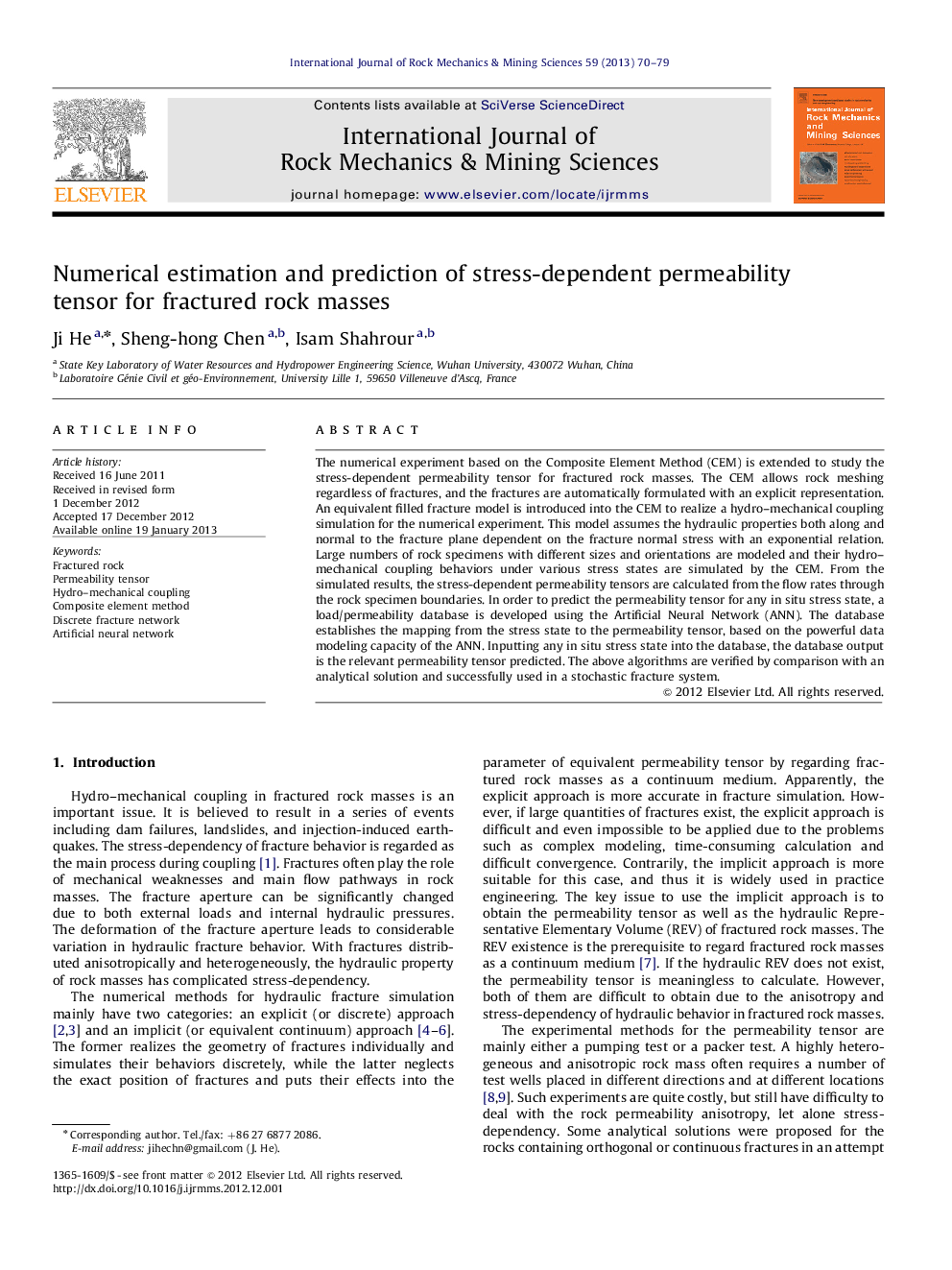| Article ID | Journal | Published Year | Pages | File Type |
|---|---|---|---|---|
| 809617 | International Journal of Rock Mechanics and Mining Sciences | 2013 | 10 Pages |
The numerical experiment based on the Composite Element Method (CEM) is extended to study the stress-dependent permeability tensor for fractured rock masses. The CEM allows rock meshing regardless of fractures, and the fractures are automatically formulated with an explicit representation. An equivalent filled fracture model is introduced into the CEM to realize a hydro–mechanical coupling simulation for the numerical experiment. This model assumes the hydraulic properties both along and normal to the fracture plane dependent on the fracture normal stress with an exponential relation. Large numbers of rock specimens with different sizes and orientations are modeled and their hydro–mechanical coupling behaviors under various stress states are simulated by the CEM. From the simulated results, the stress-dependent permeability tensors are calculated from the flow rates through the rock specimen boundaries. In order to predict the permeability tensor for any in situ stress state, a load/permeability database is developed using the Artificial Neural Network (ANN). The database establishes the mapping from the stress state to the permeability tensor, based on the powerful data modeling capacity of the ANN. Inputting any in situ stress state into the database, the database output is the relevant permeability tensor predicted. The above algorithms are verified by comparison with an analytical solution and successfully used in a stochastic fracture system.
► The numerical experiment based on the Composite Element Method (CEM) is studied. ► The CEM allows rock meshing regardless of fractures. ► An equivalent filled fracture model is introduced for coupling simulation. ► A load/permeability database is developed using the Artificial Neural Network. ► The prediction error is 12.99% by comparison with an analytical solution.
